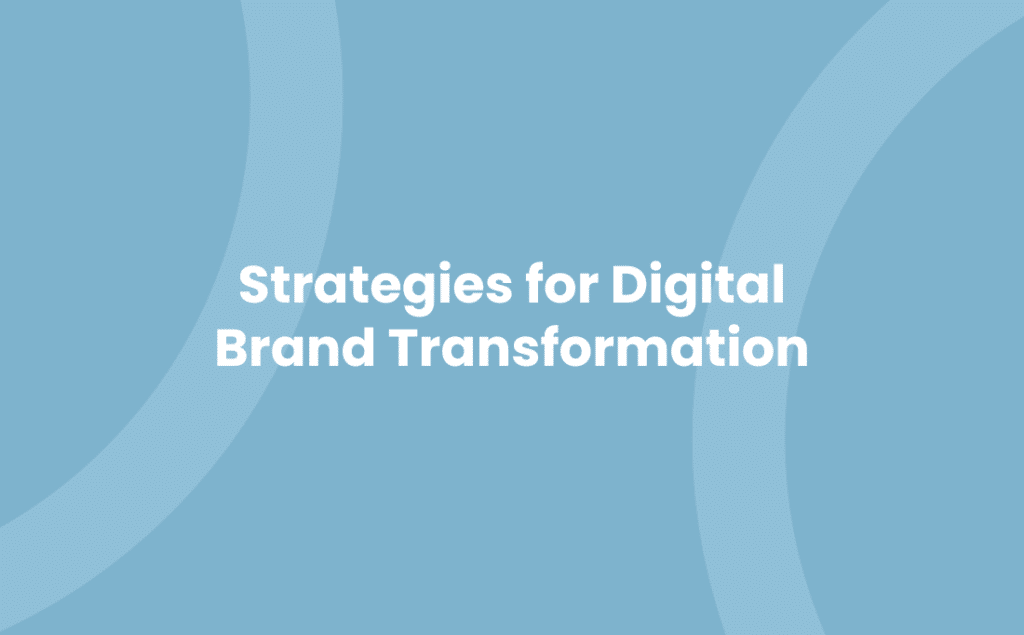Strategies for Digital Brand Transformation
It’s crucial to keep up with the current pace of technological change. That’s where digital transformation and digital brand strategy come into play. These are not just buzzwords; they’re game-changers that can catapult your business into the future.
Digital transformation is all about using technology to enhance your business operations, while a well-executed digital brand strategy focuses on leveraging digital platforms to strengthen your brand presence. But how can you effectively implement these strategies? What are the pitfalls to avoid? Let’s delve into the world of digital transformation and digital brand strategy to unearth the answers.
An exciting journey awaits. So buckle up, and let’s explore the digital landscape together.
Understanding Digital Transformation
Digital transformation represents an essential shift in the business landscape, but it’s more than a mere trend. Exploring its nuances allows for a better comprehension of why it proves crucial in today’s digital age. As a business owner operative within the realms of the United Kingdom’s Small and Medium Enterprises (SMEs) sector, understanding this change brings invaluable benefits.
Digital transformation operates on a remarkable premise, harnessing digital technologies to modify existing, or invent completely anew, business processes and customer experiences. Modifications catalyse improvement in operational procedures and strategic approaches, all within the aim of functioning as a digital-first organisation.
A central part of this transformation includes digital brand strategy, which serves as a structured plan to permeate your brand’s presence in the digital sphere. Primarily, it connects your brand to your target audience using digital spaces. A successful digital brand strategy and transformation plan align to bolster your brand’s visibility while tailoring an enhanced customer experience.
Recall, digital transformation isn’t solely about technology. Surprisingly, it’s more about people and the changes in their behaviour. It’s about how businesses adapt to match customer habits. For example, with the rise of shopping online and the constant need for instant customer service response, businesses must digitally transform to meet, and ideally exceed, these evolving consumer requirements.
In the sea of ever-updating tech, understanding digital transformation equates to staying afloat, and embracing it can transform your business from a simple vessel to a dominant flagship. By knowing how this process works, you’re unlocking the vital tools to future-proof your business, consistently adapting and delivering quality services to your customers in an increasingly digital age.
Developing a cohesive digital brand strategy alongside digital transformation efforts is a stepping stone on your journey to digital success. Though the route may appear densely packed with technology jargon, the important focus remains on enhancing your customers’ experience and streamlining your business processes. Lastly, tailored strategies are vital for navigating the intricacies of the digital world, guiding your business towards success in this ever-evolving landscape. It serves as a sturdy anchor, enabling you to sail smoothly even during digital storms.
Exploring Brand Digitalisation Strategies
Unleashing potential, a strategic digital brand strategy illuminates the path toward success in today’s digitally driven business landscape. This section delves into potential strategies for effectively digitising your brand.
- Develop a Digital Brand Strategy Mindset: Initiate a ‘digital-first’ perspective across all business operations. Prioritise digital platforms for advertising initiatives, customer interaction, and service delivery. This shift in mindset enables effective utilisation of digital capabilities.
- Utilise Data Analytics: Harnessing the power of data analytics plays a pivotal role in strategic digitalisation. Use data to inform decisions about website design, content creation, and campaign management. Through analytics, identify customers’ browsing habits, preferences, and interactions, directing this knowledge to optimise your digital presence.
- Ensure Mobile Optimisation: In 2021, 56% of website traffic was mobilised worldwide, strongly suggesting a focus on mobile optimisation. Make certain that your website is equally functional, attractive, and user-friendly on mobile devices, granting customers flexibility in device choice when engaging with your brand.
- Engage in SEO Practices: A non-negotiable factor, Search Engine Optimisation (SEO), aids in enhancing your brand’s visibility on search engines. Incorporate relevant keywords, produce high-quality content, and provide a smooth user experience, enriching your site’s ranking and visibility.
- Establish and Maintain Social Media Presence: A strong social media presence forms an essential part of a holistic digitalisation strategy. Keep regular, engaging interactions flowing on social platforms, delivering on-point, high-quality content. Remember that social media is a two-way street; consistency in monitoring, engaging, and responding creates a compelling and approachable brand persona.
- Offer Multichannel Experiences: Consumers make use of various channels such as websites, mobile apps, and social media, to engage with brands. Providing them coherent, consistent experiences across these channels fosters customer satisfaction and loyalty.
- Deploy Customer-Centric Content: Engaging content lures in customers, retains them, and optimises interactions with your brand. Adopt a user-centric approach, generating content that resonates with the interests, needs, and challenges of your target audience.
Incorporating a clear digital brand strategy into these practices ensures your brand remains consistent, recognisable, and valuable in all digital touchpoints.
The Interplay between Digital Transformation and Brand Digitalisation
Diving headfirst into the sea of brand digitalisation and digital transformation is no small decision for your business. So here’s the crux of the matter: these two terms are intriguingly intertwined and unravel different aspects of the same grand tale. Digital transformation forms the underlying base, with digital brand strategy being the icing on the cake, providing that final, polished touch for your SME’s digital representation.
Digital transformation sets the stage. It orchestrates the shift of your business methods, products, and services onto the digital platform. When paired with a strong digital brand strategy, your business can fully leverage the benefits of visibility, trust, and engagement in a competitive online market.



